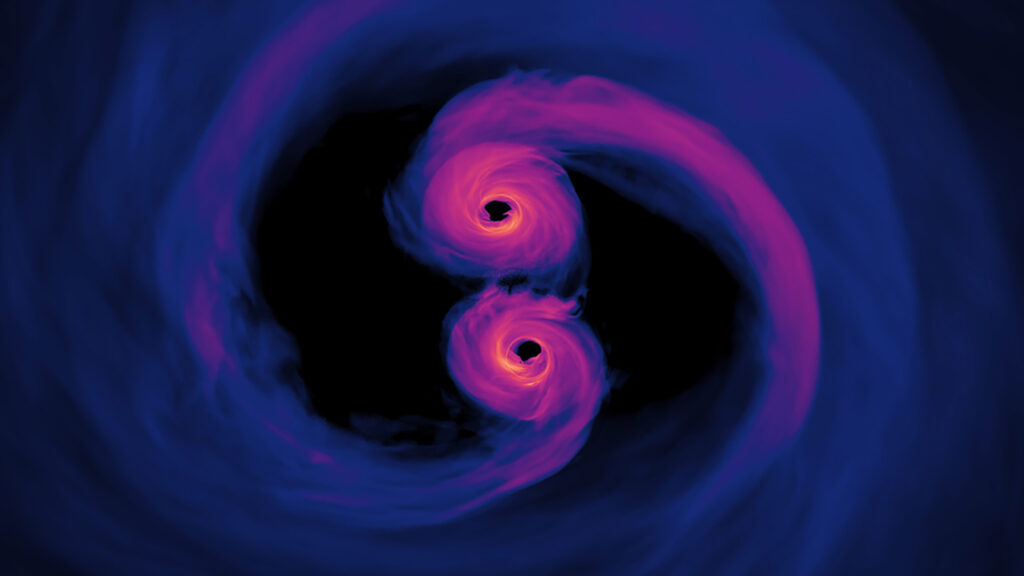Astrophysicists from the University of Zurich, in collaboration with international teams, have proposed a groundbreaking method to detect supermassive black hole binaries (SMBHBs) by utilizing gravitational waves from nearby smaller black holes. This innovative approach is a significant leap in our ability to uncover some of the universe’s most massive and enigmatic objects.
Detecting supermassive black holes (SMBHs), which reside at the centers of galaxies, has been a formidable challenge. Traditional gravitational wave detectors like LIGO have successfully detected waves from smaller black holes (remnants of collapsed stars) but these detectors are not sensitive to the low-frequency waves emitted by SMBHBs. Future missions like LISA (Laser Interferometer Space Antenna) will improve sensitivity but might still fall short in detecting the most massive black hole pairs. The new method ingeniously turns this challenge on its head. By focusing on high-frequency gravitational waves emitted by small stellar black hole binaries, researchers can indirectly detect the presence of nearby SMBHBs. Think of it as tuning into a radio station: the small black holes’ waves act like the carrier signal, and the massive black holes are the music modulating this signal.
But how does it work?
When a pair of small black holes orbits each other, they emit gravitational waves. If there’s a massive black hole pair nearby, the gravitational waves from the smaller pair will experience subtle modulations due to the immense gravitational influence of the SMBHBs. These tiny modulations are like the FM signal in radio broadcasting, carrying information about the larger black holes.

Dr. Jakob Stegmann, the lead author from the Max Planck Institute for Astrophysics, describes this as “using the signal from pairs of small black holes similar to how radio waves carry a signal.” The subtle frequency modulations can reveal the hidden presence of supermassive black hole binaries, even those with masses between 10 million to 100 million times that of our sun.
This method holds immense potential for advancing our understanding of black hole formation and evolution. Moreover, this approach allows for the detection of SMBHBs at vast distances, significantly expanding the observational reach of astrophysicists. The capability to identify these massive objects will enhance our understanding of galaxy evolution and the dynamic processes occurring at their centers.
Lucio Mayer, a co-author of the study, emphasizes the need for prioritizing deci-Hz detectors. As we look to the future, creative and out-of-the-box ideas like this will be pivotal in solving some of the biggest mysteries in the universe.

















